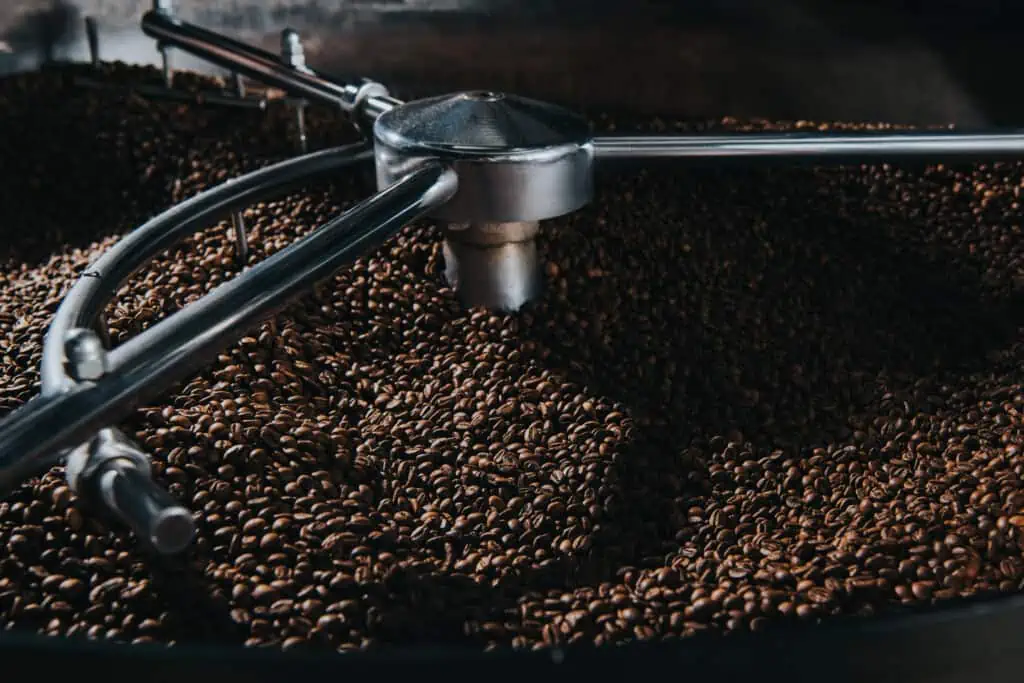
Dark-roasted coffee beans cooling in the roaster.
Ten or 15 years ago in North America, there was little doubt about what a dark roast was, or how it was expected to taste. The beans were very dark brown in color, edging toward black, shiny with oil, and the dominating sensory feature was a richly pungent, charred cedar character usually softened by chocolate and a raisiny fruit. If you were lucky and attentive, you might also pick up some hints of other fruit or even flowers. On our Agtron roast-color reader, such coffees usually registered around 33 to 40 on the M-Basic Whole-Bean scale. For comparison, medium roasts come in around 55 and up, light roasts about 60 and up. (Also note that with Agtron and other roast-color scales, the lower the number, the darker the bean color.) Such explicit dark roasts were the signature roasting style of the dominant behemoths of the specialty coffee world at the time — Starbucks, Peet’s, Caribou Coffee — as well as many smaller roasting companies.
But around that time, say 2010 or so, a polarization set in between proponents of the newly developed light-roasting camp, who were focused on foregrounding the innate character of the green bean through sensitive light-to-medium roasting, and those many coffee drinkers who still wanted their rich, scorchy, hopefully chocolaty dark roasts. Those in the light-roasting camp often pursued their newly defined mission with passionate ideological absolutism. Even a hint of roast taste was unacceptable in their coffees. As for their customers, the implied message was: Don’t think about putting milk in that coffee, and if you can’t handle a bright, acidy coffee drunk black, go home and tell your mama.
And those in the dark roast camp? Either they hardly noticed a change and went on buying their Peet’s or Starbucks’ dark-roasted Sumatra, or they stumbled into the wrong café after Covid let up, tried a cup of a light-roasted Ethiopia Yirgacheffe, grimaced, glared at the nearest millennial, and walked on down the street to the nearest Peet’s or Starbucks.
Revisiting the Light/Dark Polarization
Today, does the light/dark polarization still hold? Or are the boundaries blurring? Is there any interesting space developing between the two camps?
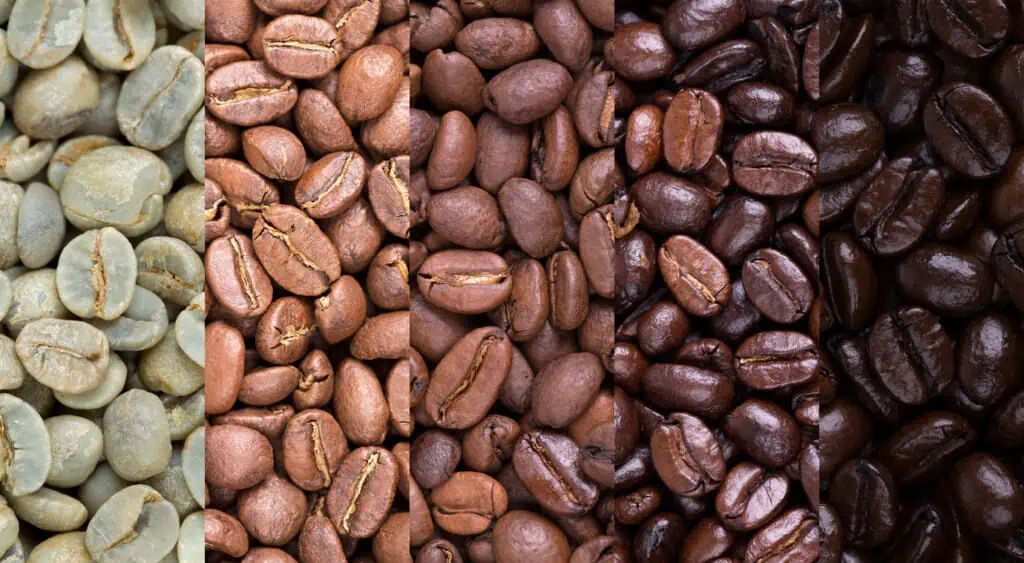
Coffee beans showing various stages of roast development.
Last month, we cupped (and took Agtron roast color readings for) 114 coffees labeled “dark” by their roasters. Of the 114, 60 were produced by North American roasters, 42 by roasters on the coffee-passionate island of Taiwan, and two by a Korean roaster. In addition, we purchased six samples of Starbucks and Peet’s dark-roasted coffees as part of our benchmarking comparisons between the coffees submitted by roasters and nationally available coffees of the same style or origin.
Based on those 114 samples, here are some observations about the state of dark roasting in North America and Taiwan in 2023.
Less Rigidity, More Complication
The polarization in North America between dark-roasting and lighter-roasting camps is indeed blurring. Starbucks, for example, the titan of dark-roasted coffees, now offers “blonde” roasts next to its bread-and-butter dark roasts. Peet’s, the originator of the contemporary dark-roasting style, offers “light” roasts next to its darks. While at the same time, it appears that many committed light-roasting companies are at least dipping a toe in the dark-roasting waters.
Matt Bollinder founded Speckled Ax Wood Roasted Coffee in 2007 on an aggressively lighter roasting, microlot-focused program. But he admits, “We’re much less dogmatic these days, in part because the specialty coffee landscape has changed quite a bit (lighter roasted microlots are the expectation, rather than the exception, so there’s less [re]education necessary), but also because of an emphasis on customer service. The goal is not to force light roast Yirgacheffe down a customer’s throat, but to make them happy.”
The Speckled Ax Map 40 Mokha Java blend (92) could perhaps be seen as a graceful compromise between loyalty to vision and keeping the customer happy. Rather than forcing a light-roast Ethiopia down a dark-roast-craving customer’s throat, it appears to seduce the customer with a complex blend that cushions 60 percent washed Ethiopia coffees with other softer, less bright coffees, all subjected to complex roasting strategies that net a cup with an intrigue of berry, flowers, cocoa and slightly scorchy herb.
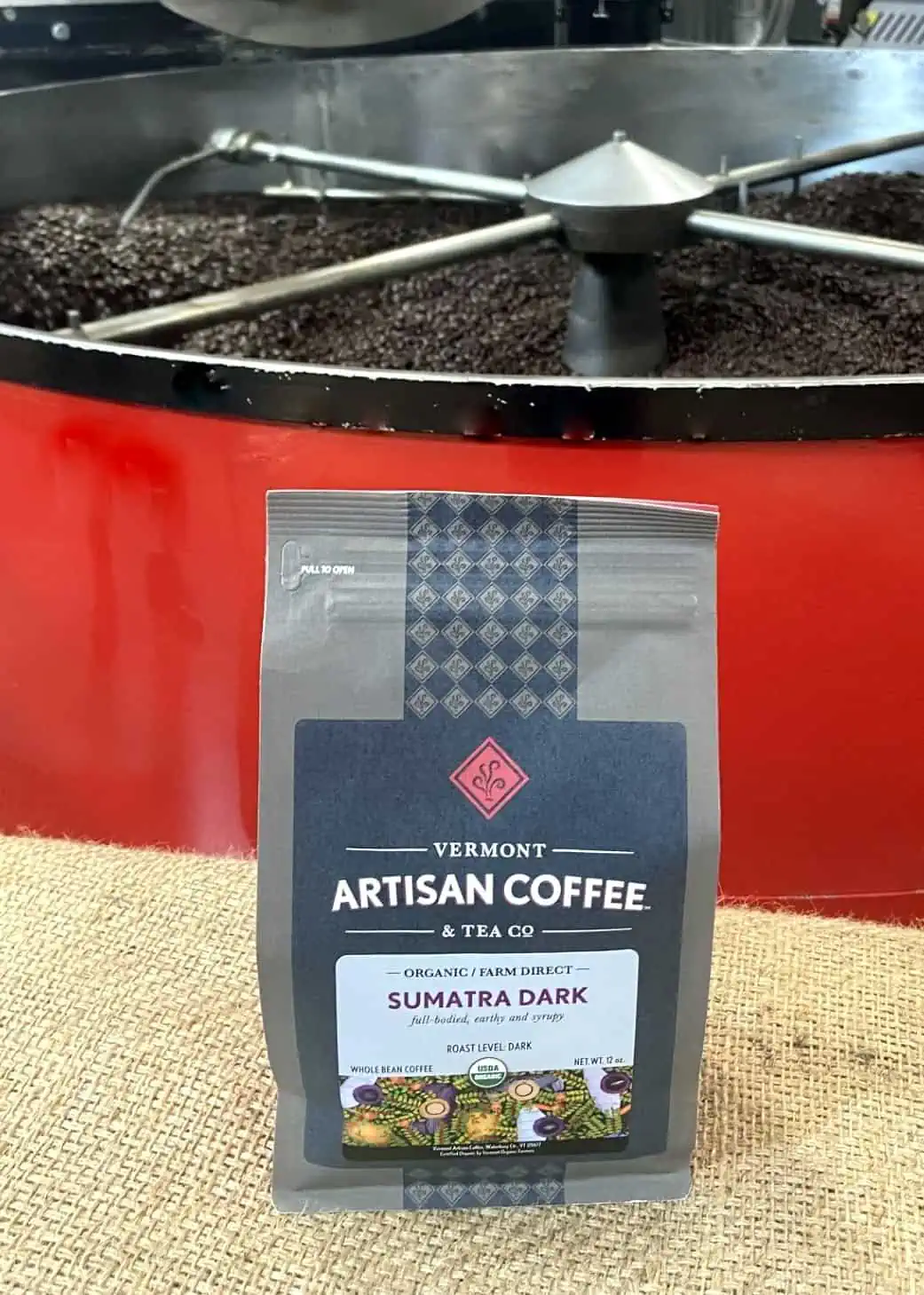
Vermont Artisan’s dark-roasted Sumatra, reviewed here. Courtesy of Vermont Artisan Coffee.
Three other samples among the five reviewed from American roasters were roasted even lighter, just to the point when medium can be said to stop and darker start — when the oils just begin to migrate from the cells of the bean to the surface, creating the crinkling sound roasters call the second crack. This is the moment when the woody matrix of the bean starts to lightly char, creating the first hint of the scorchy, pungent taste we associate with darker roasts. But it is also a moment when the chemical changes associated with greater sweetness in the coffee continue to develop and flavor notes continue to deepen and shed the brightness associated with lighter roasts. It appears that many of the U.S. roasters were aiming at this point in the roast cycle, attempting to exploit the depth of sensation and rounding of acidity possible in darker roasts while minimizing the explicit taste of the roast.
Based purely on instrument reading of color, for example, Bassline Coffee’s Ethiopia Yirgacheffe Dark Roast (93) is literally medium-roasted (it’s only three points darker than the reading we recently obtained for the a “light-roasted” Peet’s Coffee Costa Rica Aurora), yet it displays a subtly roast-deepened character — the chocolate crispy and cocoa-ish, the flowers sweet and lush.
Revel Coffee seems to allude to this newer, more slippery definition of dark roast when it describes its excellent Sumatra Karo Mandheling (91) as “‘lil darker.” Like the Bassline Yirgacheffe, the Revel makes only a nod to roast taste, a smoky hint perhaps, with the roast mainly contributing sweetness and depth to a classic Sumatra grapefruit and pipe tobacco profile.
Two 94s at the Medium/Dark Cusp
This month’s champions among these successes of light/dark balance are two 94-rated coffees: from the U.S., the Hula Daddy SL34 Dark Roast, and from Taiwan, GK Coffee’s Ethiopia Bench Maji Geisha Lucy Station Dark Roast. Both were brought, it would appear, just into the second crack, and both impressively showcase the way a tactfully medium-dark roast can soften and deepen complex sensations without dulling them or overlaying them with roasty distraction.
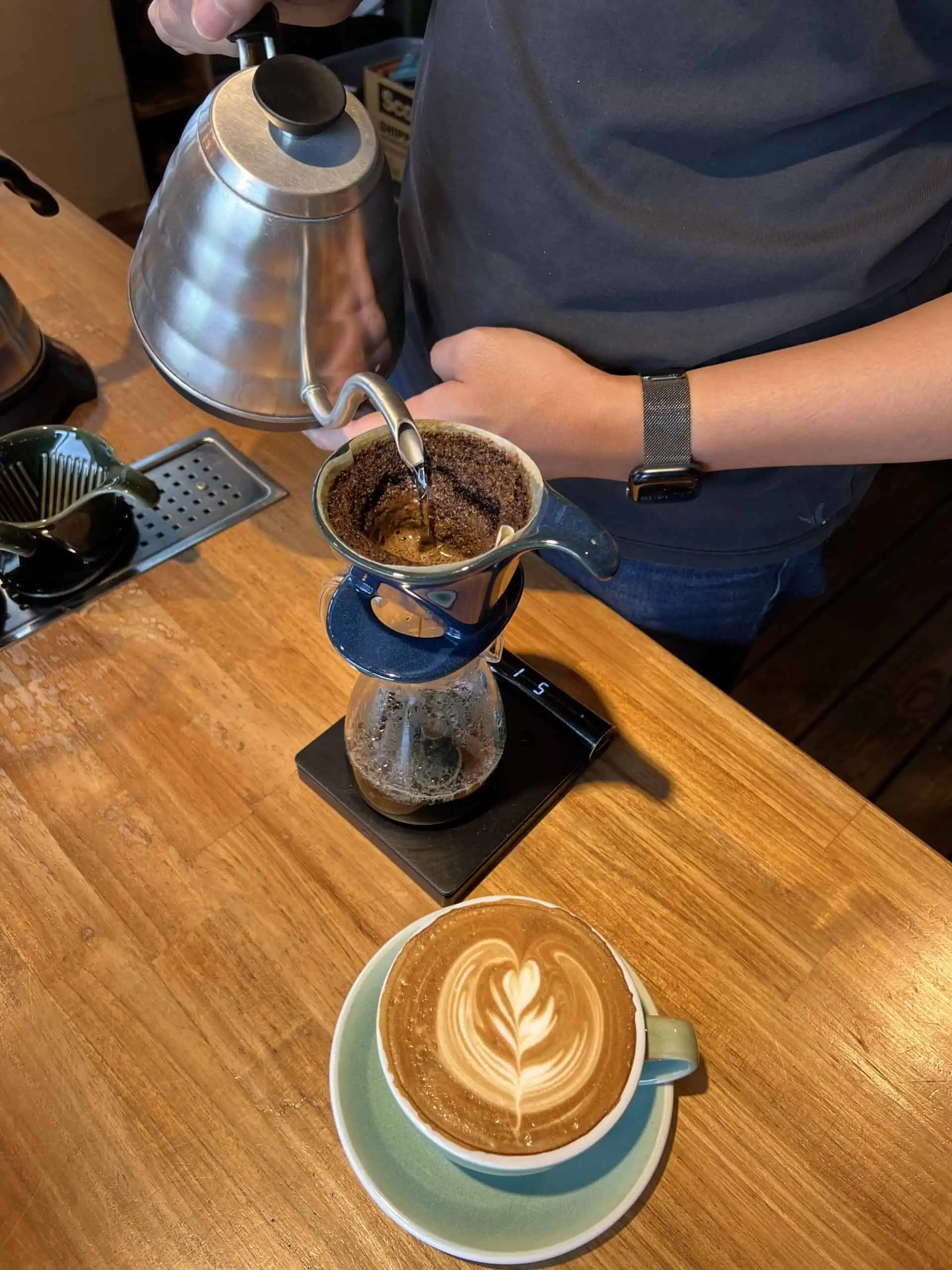
Brewing up a cup of GK Coffee’s Ethiopia Bench Maji Geisha Lucy Station dark roast. Courtesy of GK Coffee.
The SL34 is a famous coffee variety originally selected and long grown in Kenya. On Hula Daddy’s higher-elevation farm, it has proven to be a source of consistently exceptional coffees. This particular lot was further distinguished by processing with an anaerobic ferment step with commercial yeast, contributing to a deep, tangy sweetness and a general aromatic originality.
The GK sample also is from a very distinguished tree variety, the famous Geisha (also Gesha), in this case grown in its original homeland, Ethiopia. Again, here the darker roast is more backgrounded than explicit, contributing resonance and sweetness and heightening the chocolate.
Interestingly, I just discovered as I was putting the final touches on this report that last month we tested the same coffee, the Ethiopia Bench Maji Geisha Lucy Station, from the same roaster, GK Coffee, for a standalone review. However, the May version was brought to an unambiguous light roast (Agtron whole-bean 64), while this month’s version was moderately dark roasted (Agtron whole-bean 45). Interestingly, the difference in roast development did not seem to impact the overall rating. We assigned the same score to both: 94. The sensory descriptors we associated with the two samples overlapped despite their differences. Both descriptions emphasized bright citrus, for example, but for the lighter-roasted coffee, our descriptor associated the citrus with “makrut lime,” an extremely tart citrus, whereas for the darker version we cited “Meyer lemon,” still tart but usually spicier and a little softer and richer. Our review for the lighter-roast version cited honey; for the darker, chocolate. The flowers associated with each were similarly heady and sweet, although the honeysuckle associated with the darker roast is often described as a bit more deep and vanilla-like than the star jasmine we cited for the lighter roast.
Perhaps distracted by the sheer number of coffees we tested for this report, we discovered that we had generated two reviews for the same green coffee only after we had cupped, rated and written descriptions for both. The discovery was reassuring, however, not only because we had assigned the same rating for both, but because our descriptors overlapped in more or less coherent ways. The identical ratings also suggest that we at Coffee Review are not prejudiced against dark roasts, as we sometimes fear we are.
Real Dark Roasts?
Of course, for many coffee drinkers, a coffee roasted to a moderately dark Agtron whole-bean 45 is not a real dark roast. It’s possible that the edge-of-dark tightrope walking performed by the five coffees just discussed do not satisfy coffee lovers who value the straightforward, scorchy, chocolaty intensity of a full-on dark roast. And when we look at the top-rated samples that display such clear and explicit roast influence — those with whole-bean Agtrons around the mid- to high-30s — Taiwan roasters have the edge.
Of the five samples we rated 94 or higher this month, four were produced by Taiwan roasters, and three of those were brought to a clear, unapologetic dark roast. Furthermore, if we look at all of the definitive dark roast samples we rated 91 or higher, most were produced by Taiwan roasters. In fact, the disproportionate success of Taiwan dark roasts this month accounts for the unusual approach we took when selecting coffees for review. We decided to review the top five Taiwan dark roasts, ranging from 95 to 93, and the top five U.S. dark roasts, ranging from 94 to 91. This means that four Taiwan coffees earned a score of 92 but are not reported on here: Henry’s Café Kenya Nyeri AA TOP, Euphora Coffee’s The World Blend, Kakalove Cafe’s Black-Meow Blend, and Min Enjoy Café Roaster’s Ethiopia.
Taking Dark Seriously
Why the particular success of Taiwan roasters with explicitly stated dark roasts? Possibly because some elite small-batch Taiwanese roasters may be lavishing the same attention on dark roasts as they do on lighter roasts. One of our cupping team members, Jason Sarley, observed that “it seemed that on an average the Asian roasters used more distinctive, high-quality green coffees for their dark roasts, and used the same careful roasting techniques that in the U.S. are traditionally saved for medium- and lighter-roasted coffees.” It’s possible that U.S. roasters are tempted to take dark roasts for granted, particularly explicit dark roasts in the classic style, and put their creative focus more on light roasting small lots of exceptional coffees that are likely to win competitions and awards. Several of the Taiwan roasters we corresponded with appear to be putting a conscious effort into developing quality around dark roasts and building a taste for them among their clientele.
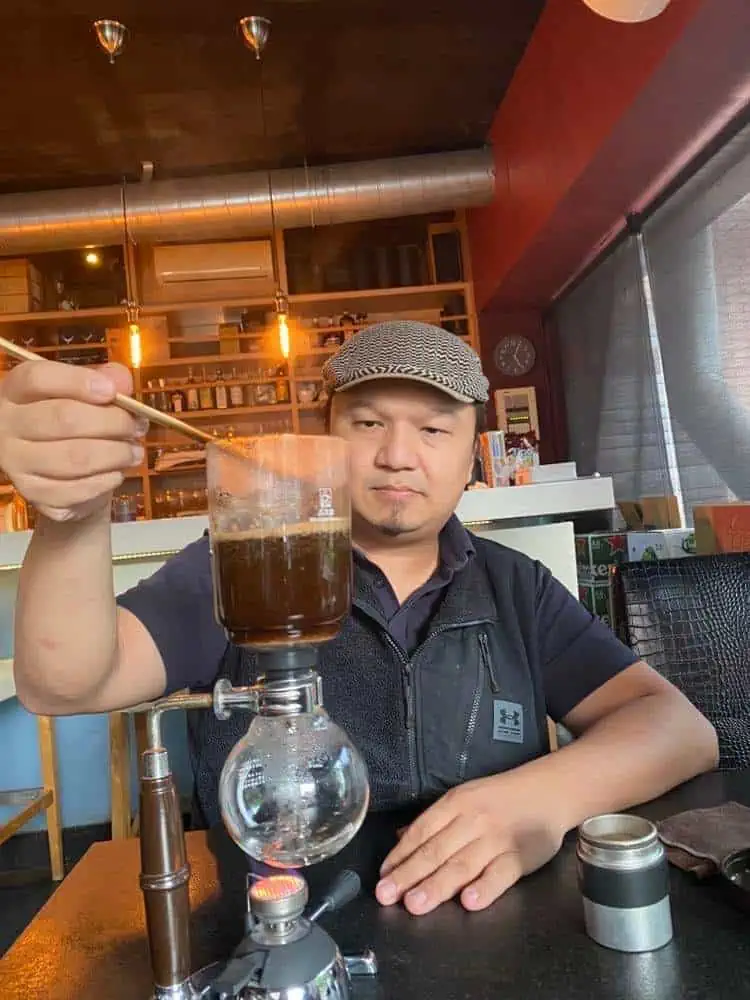
Simon Hsieh brewing. His dark-roasted Kenya AB is reviewed in this month’s report. Courtesy of Simon Hsieh.
Simon Hsieh, who sent us the 94-rated Kenya AB Athena Plus, and whose darker-roast espressos regularly attract high ratings on Coffee Review, roasts everything he sells medium-dark to dark, and has for years. He reports that his clientele, in general, love his coffees’ rounded acidity, sweetness and floral character. His Kenya AB Athena Plus certainly does preserve sweetness and spicy flowers but is also a powerfully stated cup with the dark roast reinforcing the characteristic savory-sweet Kenya depth and complex herby fruit.
Mark Shi of MK Coffee, whose Kenya topped this month’s ratings at 95, reports: “Chain coffee shops and convenience stores in Taiwan can easily obtain dark-roasted coffee (including American dark-roasted coffee). [But] when communicating with customers about dark-roasted coffee, I learned that most people feel [it] has a smoky and burnt bitter taste. So I want to make my dark roast different. I want to add some lively feeling into it.”
That “lively feeling” is what we found we most valued in the MK Kenya, as well as in all of the three most successful explicitly dark-roasted samples. All are different, but in all three, the scorchy, smoky roast character works in and around a complex aromatic and structural character. The roasty assertion may be backgrounded, as it is in the MK Kenya, where the sweetness promoted by dark roasting most stood out, or more pungent and bracing, as in the Simon Hsieh Kenya. Or it may contribute brisk supporting richness to complex flowers, chocolate and berries, as with the Fumi Coffee Kenya Muranga (94).
The Importance of Origin: Kenya and Sumatra
Of course, an observant reader will note that all of the high-rated explicitly dark-roast coffees just cited were single-origin Kenyas. Kenyas from the classic central regions are very high-grown in dryish conditions, making for a dense, tough bean. Furthermore, it’s a bean with typically persistent, strongly stated aromatic character owing to Kenya’s distinctive tree varieties. It may be that very distinctive but somewhat more delicate coffees like Ethiopias preserve character better at the slightly lighter, cusp-of-the-second-crack roast style introduced earlier in this report.
Two of this month’s reviewed coffees, the Revel Coffee Sumatra Karo Mandheling – ‘lil darker (91) and the Vermont Artisan Coffee & Tea Sumatra Dark (91) draw on what amounts to a long-established retail coffee type that is as old as contemporary American dark roasting itself. Dark-roasted Sumatras were introduced to the U.S. coffee scene by Alfred Peet at the same seminal moment he opened his first store and roastery in Berkeley, California, in 1966. Peet’s and Starbucks have continued to offer dark-roasted Sumatras, helping turn the origin and type into a kind of shared, informal brand
Traditional Sumatras from the Mandheling and Aceh growing regions are not high-grown like Kenyas, nor are they produced from clearly defined and distinctive tree varieties. But apparently, the characteristic regional wet-hulling procedures and associated slow, staged drying give traditional Sumatras a toughness and character that stands up well to dark roasting. True, the Revel Karo Mandheling was treated with tact and gentleness at Agtron whole-bean 52, but the Vermont Artisan Sumatra Dark was brought to a full-on Agtron whole-bean 36 dark roast, and effectively fulfills the legacy of the traditional dark-roasted Sumatra profile: scorchy oak, pipe tobacco, some cocoa and a lift of vanilla-like flowers.
Dark Roasting and Blends
Blends present a more complex picture than single-origins. Certainly, many of the blends that we rated in the mid-80s this month were probably composed of coffees lacking sufficient density and character to stand up to dark roasting without losing themselves in the bland, smoky emptiness that is the danger of the type.
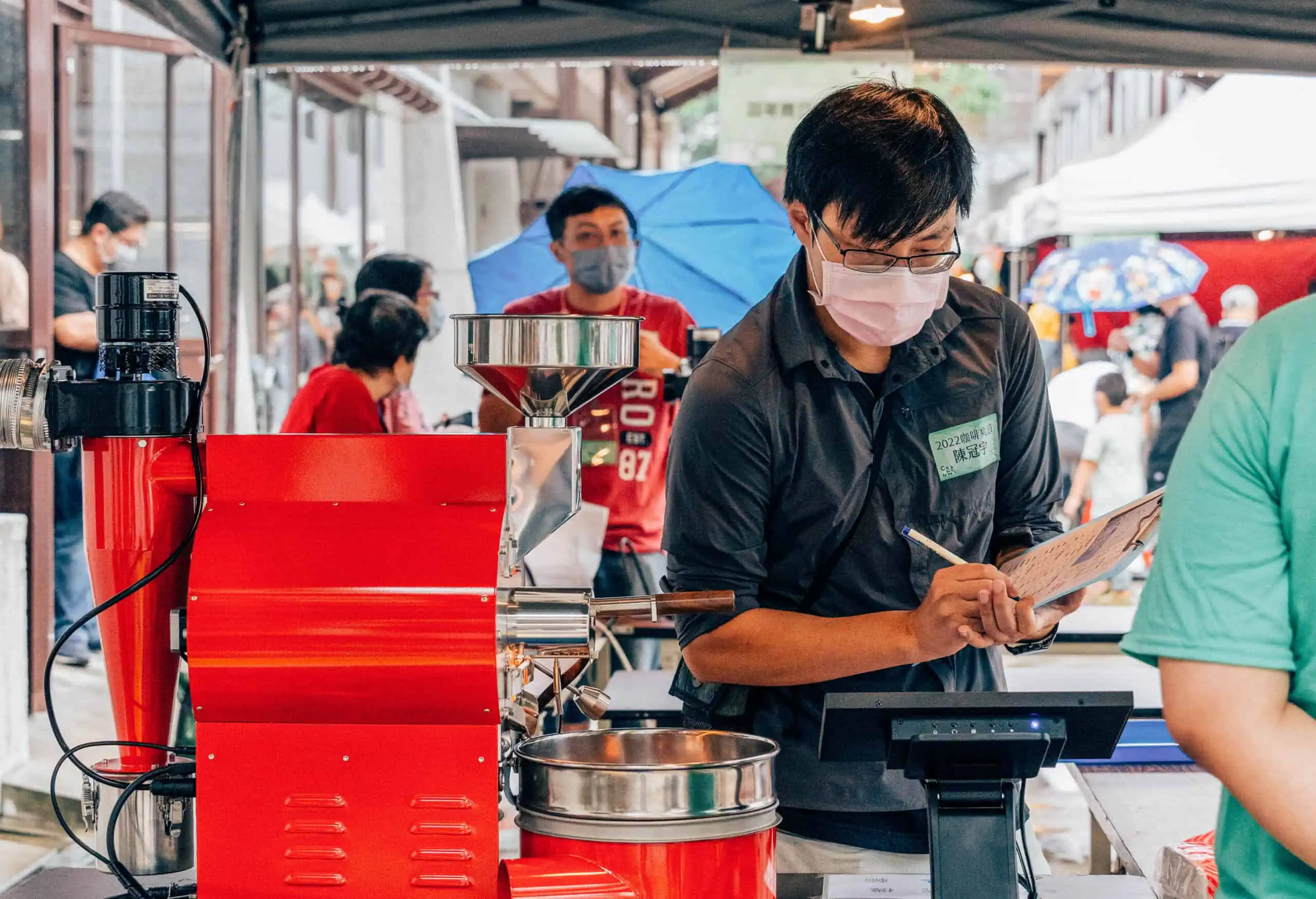
Balmy Day Coffee Office participates in a roasting competition in Taiwan. Courtesy of Arthur Chen.
However, we cupped notable successes among the darker-roasted blends. The Balmy Day Coffee Office Black Peach Q Blend (93) is a complex composition combining four coffees processed by three different methods, at least one of which gave clear sensory signs of anaerobic fermentation. This blend maintained a powerful presence at a definitively dark Agtron whole-bean 40, with guava-toned brightness soaring out of a roast-toned heart.
Another Free Brand: Mocha-Java
Mocha Java (or Mokha Java, or Moka Java) blends are a special case. Famously created by combining the world’s first two commercially traded coffees — Yemen shipped through the port of Mokha and Java from the Dutch colony — this blend has, over time, become more pretext than recipe. The basic starting point involves combining a natural-processed coffee (inspired by the original Yemen) with a wet-processed coffee (inspired by the original Java). But however interpreted, Mocha-Java has become, like Sumatra, something of a staple in the North American specialty tradition. The 92-rated version from Speckled Ax cited earlier meanders creatively across the coffee world, interpreting the concept with four different blend components: three Ethiopias, two conventionally washed and one natural, and one gamey washed coffee from Papua New Guinea. Our benchmark big-roaster comparison for this month, the Peet’s Arabian Mocha-Java Dark Roast (89), discloses little in regard to blend origins. “Arabian” in the coffee name suggests that one component is a Yemen, but Peet’s offers no confirmation, and given Yemen’s small, precious output, I doubt it. I suspect an Ethiopia, and I would guess from the cup profile that there is also a wet-hulled Indonesian coffee involved, perhaps a Sumatra.
For the Record
Here are our ratings for the benchmark dark roasts from Starbucks and Peet’s for comparison to the ratings for the smaller-roaster coffees reviewed this month:
| Coffee | Rating | Wb Agtron |
| Peet’s Arabian Mocha-Java Dark Roast |
89 |
37 |
| Starbucks Caffè Verona |
85 |
30 |
| Starbucks Pike Place Roast |
84 |
36 |
| Peet’s Guatemala San Sebastián Dark Roast |
84 |
37 |
| Starbucks Sumatra Dark Roast |
82 |
32 |
| Starbucks French Roast |
81 |
21 |
Evidence that, from our point of view, the high-rated darker roasts reviewed here are well worth seeking out. Medium-roast drinkers may want to take a break from their coffee-correct routine to try a darker roast or two, and dark-roast drinkers can test their usual against some of Taiwan’s and North America’s finest.
Deepest thanks to all those who generously enriched this report by sharing their practices and ideas around darker roasting: Mané Alves, Vermont Artisan Coffee & Tea; Matt Bollinder, Speckled Ax ; Arthur Chen, Balmy Day Coffee Office; Yu Chih Hao, Fumi Coffee Company; Tim Hester, Bassline Coffee; Simon Hsieh, Simon Hsieh Aroma Roast Coffees; Gary Liao, GK Coffee; Lee Paterson, Hula Daddy Coffee; Mark Shi, MK Coffee Roasters; and Gary Theisen, Revel Coffee.

